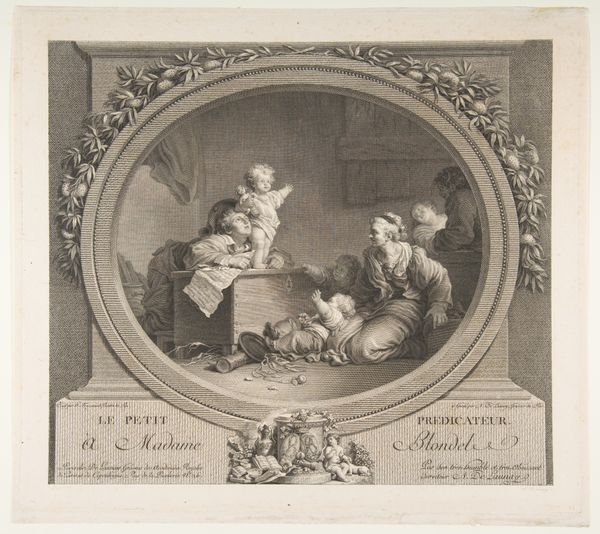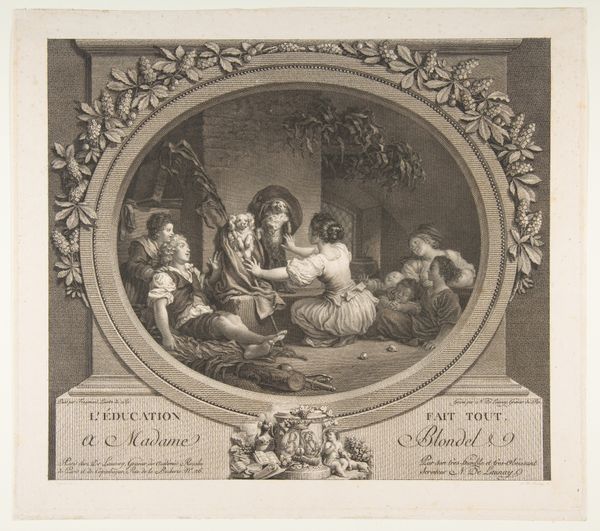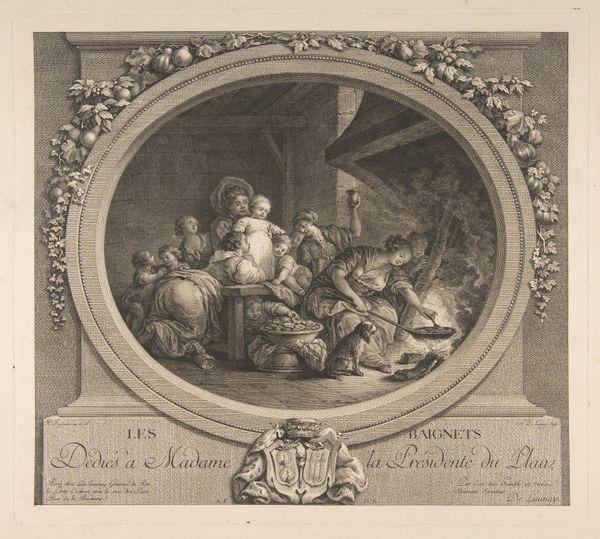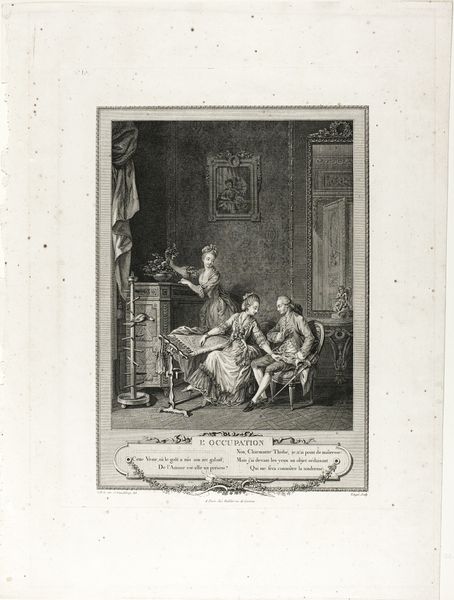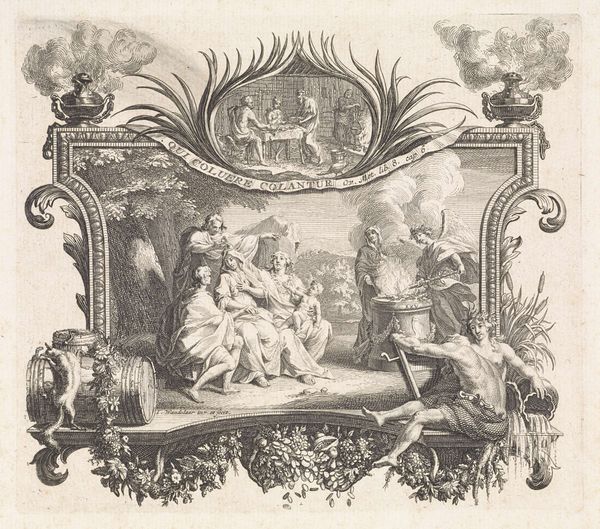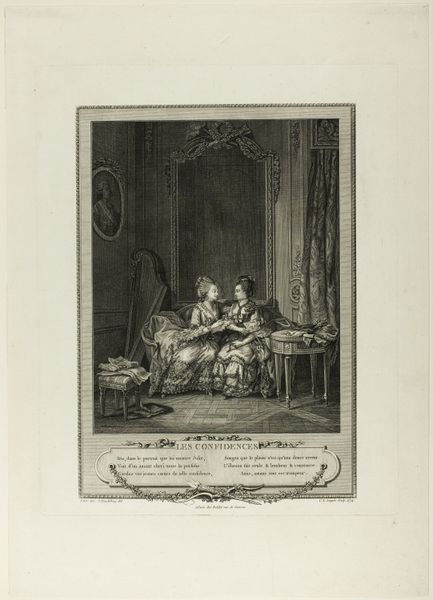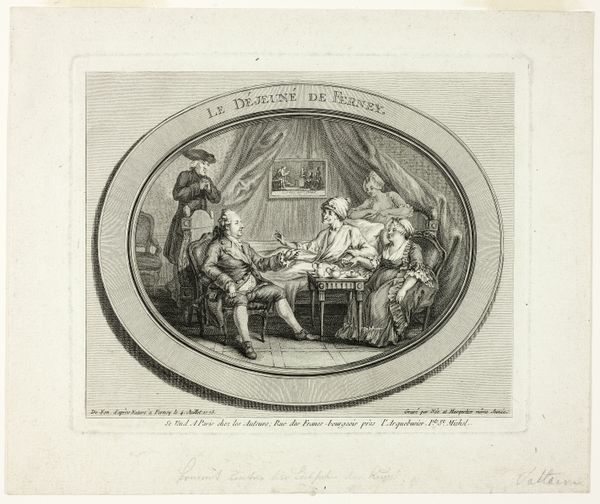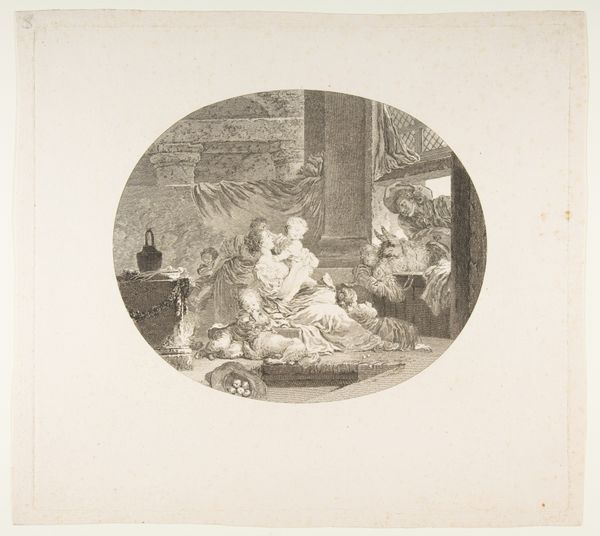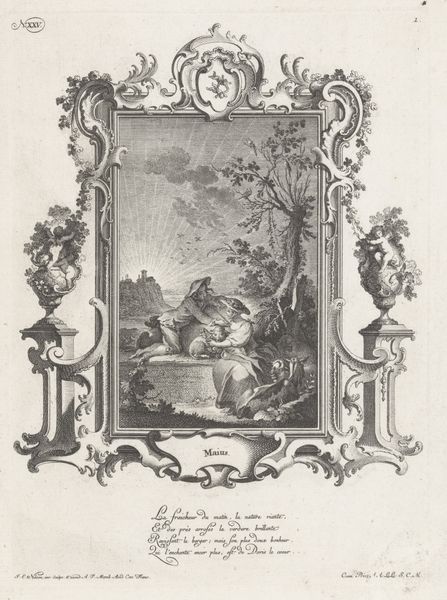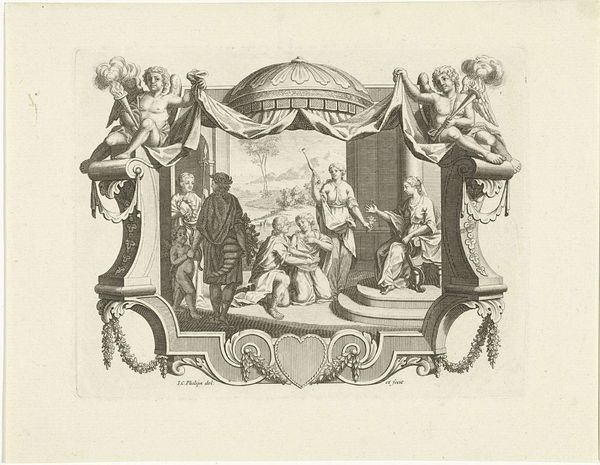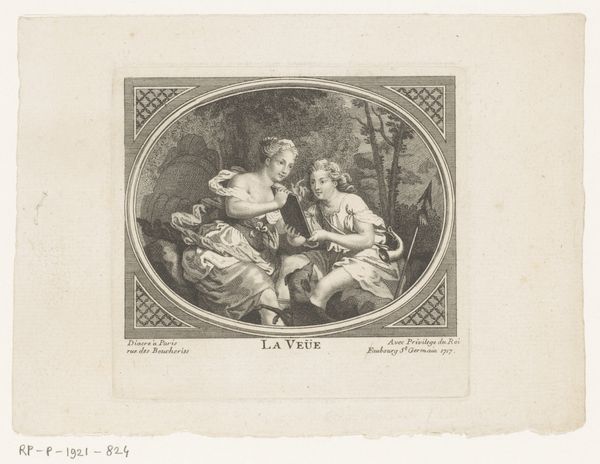
Dimensions: sheet: 15 1/2 x 21 1/4 in. (39.3 x 54 cm) image: 10 9/16 x 12 in. (26.9 x 30.5 cm)
Copyright: Public Domain
Curator: This print, “L'Heureuse Fecondite,” or “Happy Fertility,” was made sometime between 1745 and 1806 by Jean-Honoré Fragonard. It is currently held at the Metropolitan Museum of Art. Editor: My first impression is abundance and intimacy. The oval frame feels like we are peering into a very personal moment of domestic life. It also gives the scene an air of theater, perhaps, by emphasizing its composition in a staged manner. Curator: I am immediately struck by how Fragonard employed engraving to produce this image, replicating tonality and detail. The print medium suggests a dissemination to a wider audience beyond the wealthy. What are the economic conditions that allowed for that? Also, look at the complex relationship between the original artwork and the engraving that distributes it. What’s the nature of that labor and those different audiences? Editor: I am struck by how Fragonard chose to represent domestic harmony by emphasizing fecundity. The grouping of mother and children in the center clearly references classic Madonna images, but placed in an almost secular, upper-class setting. Does it subtly elevate the importance of family and lineage in society? Note the symbolic presence of the garland and even the little nest filled with eggs near the bottom, all pointing to ideas of prosperity. Curator: It’s interesting to observe the details that support this reading. What materials were used to create that nest and to bind the garland? Who provided them? Were these images circulating during a period of agricultural or economic plenty? How might they have influenced ideas about societal health and production? Editor: Absolutely. The figure gazing from the window adds a layer of contemplation. Perhaps he’s a witness or a participant in this fecund scene, reflecting on its emotional significance. It makes me consider the larger meanings of prosperity and familial connections in the cultural psyche. Curator: Looking closer, it is also valuable to ask about the source of light illuminating this domestic setting, both the economic means and the actual light. Who purchased it, installed it, maintained it? This level of engraving demands dedicated resources. Editor: Considering both our perspectives, I realize that this print encapsulates more than just the domestic; it reflects the interconnected web of symbolism, production, and personal significance prevalent during that era. Curator: Yes, understanding this entanglement allows us to deepen our grasp of history as a function of human agency, material conditions, and circulating images.
Comments
No comments
Be the first to comment and join the conversation on the ultimate creative platform.
